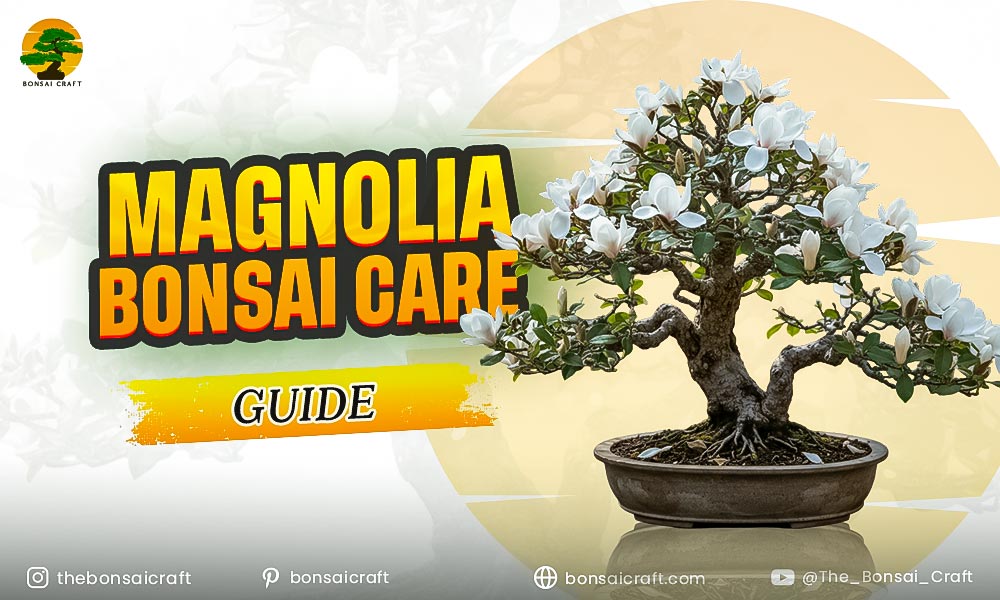
The magnolia bonsai is one of the most breathtaking flowering bonsai varieties, admired for its large, fragrant blossoms and glossy green leaves. Whether it’s the southern magnolia bonsai with its creamy white blooms or the Japanese magnolia bonsai with vibrant pink petals, this tree combines elegance and resilience in miniature form.
Caring for a bonsai magnolia tree requires a balance of pruning, wiring, watering, and seasonal attention. With years of experience in bonsai cultivation, I can confirm that while magnolia bonsai trees need patience, their stunning display of spring flowers makes every effort worthwhile.
In this detailed guide, we’ll cover everything you need to know about magnolia bonsai care—from selecting species to pruning, styling, and ensuring healthy growth.
Can You Bonsai a Magnolia Tree?
Yes, magnolia trees can be grown as bonsai. Their natural structure, large blossoms, and sturdy branches make them ideal candidates for bonsai cultivation. However, they grow slowly, so shaping a magnolia bonsai tree requires time and patience.
Why Magnolia Works for Bonsai
- Strong, flexible wood suitable for pruning and wiring
- Large, iconic flowers that contrast beautifully with compact form
- Evergreen and deciduous species available for different climates
- Adaptable to bonsai styles such as informal upright, broom, and multi-trunk
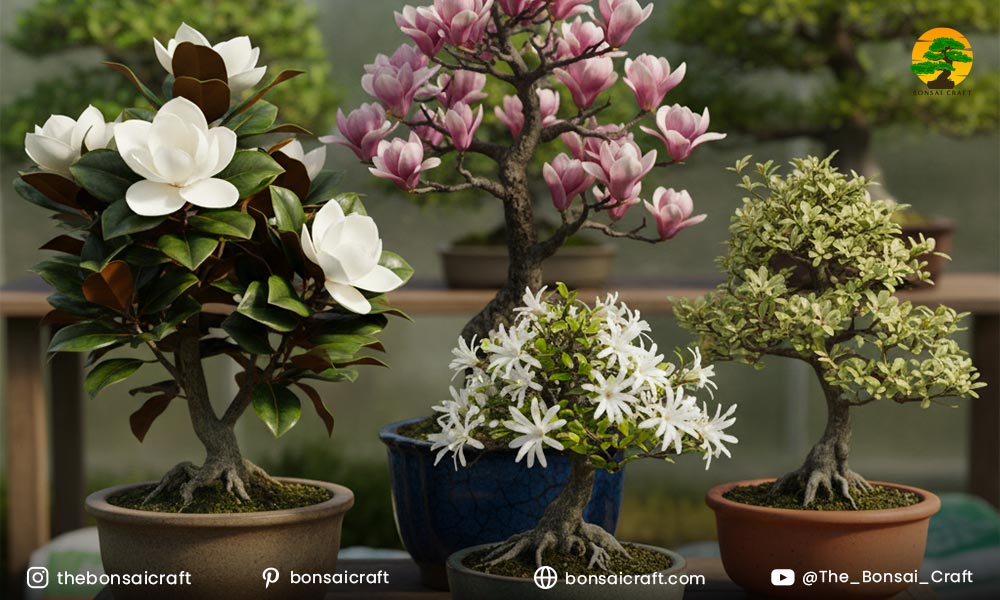
Best Magnolia Varieties for Bonsai
Not all magnolia species are suitable for bonsai. Below are the most popular types used by enthusiasts:
1. Southern Magnolia Bonsai (Magnolia grandiflora)
- Large evergreen leaves with glossy tops and velvety undersides
- Iconic white flowers with a lemon-like fragrance
- Ideal for warm climates
2. Japanese Magnolia Bonsai (Magnolia kobus or Magnolia × soulangeana)
- Deciduous, shedding leaves in fall
- Pink to purple spring blossoms before leaves appear
- Perfect for temperate climates
3. Star Magnolia Bonsai (Magnolia stellata)
- Smaller leaves and white star-shaped blooms
- Compact growth makes it a favorite for beginners
4. Sweetbay Magnolia Bonsai (Magnolia virginiana)
- Semi-evergreen with lemon-scented flowers
- Tolerant of wet soils and adaptable to various bonsai styles
Pro tip: If you’re new to magnolia bonsai, start with Japanese magnolia bonsai or star magnolia bonsai, as they’re easier to train.
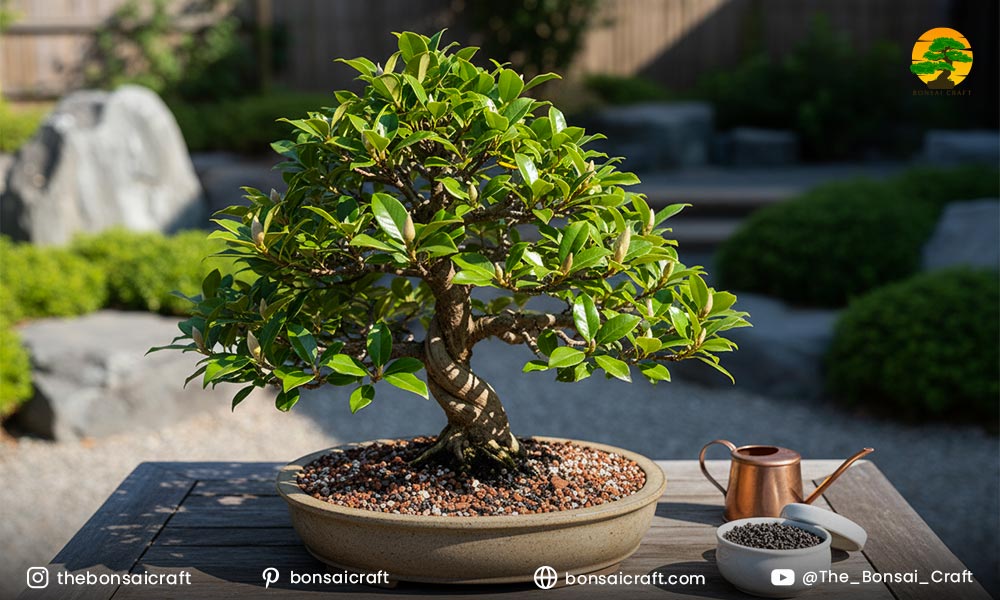
Magnolia Bonsai Care Essentials
Caring for a bonsai magnolia involves replicating its natural environment on a smaller scale.
Light Requirements
- Place outdoors in full sun for at least 6 hours daily.
- Japanese magnolia bonsai prefers morning sun and afternoon shade.
- Indoor placement is possible with strong grow lights, but outdoor growth is healthier.
Watering Needs
- Magnolia bonsai trees need consistently moist soil.
- Water thoroughly when the top 1–2 inches of soil feels dry.
- Avoid waterlogging, which can cause root rot.
Soil Mix
- Use a well-draining bonsai mix: akadama, pumice, and lava rock in equal parts.
- For moisture retention, add organic matter like pine bark.
Fertilization
- Feed every 2 weeks during the growing season (spring–summer).
- Use a balanced organic bonsai fertilizer (10-10-10).
- Stop fertilizing when the tree enters dormancy in winter.
How to Grow Magnolia Bonsai from Seed
Growing a magnolia bonsai from seed requires patience.
Quick Answer: Collect seeds in fall, cold-stratify for 3–6 months, and plant in spring. The seedlings can be shaped after 3–5 years.
Step-by-Step Guide
- Collect ripe magnolia seeds in late autumn.
- Remove the red fleshy coating and wash thoroughly.
- Cold-stratify seeds in moist sand inside a refrigerator for 90–180 days.
- Plant seeds in a well-draining bonsai mix in spring.
- Provide consistent water and partial shade until seedlings establish.
- Begin basic magnolia bonsai styling after 3–5 years of growth.
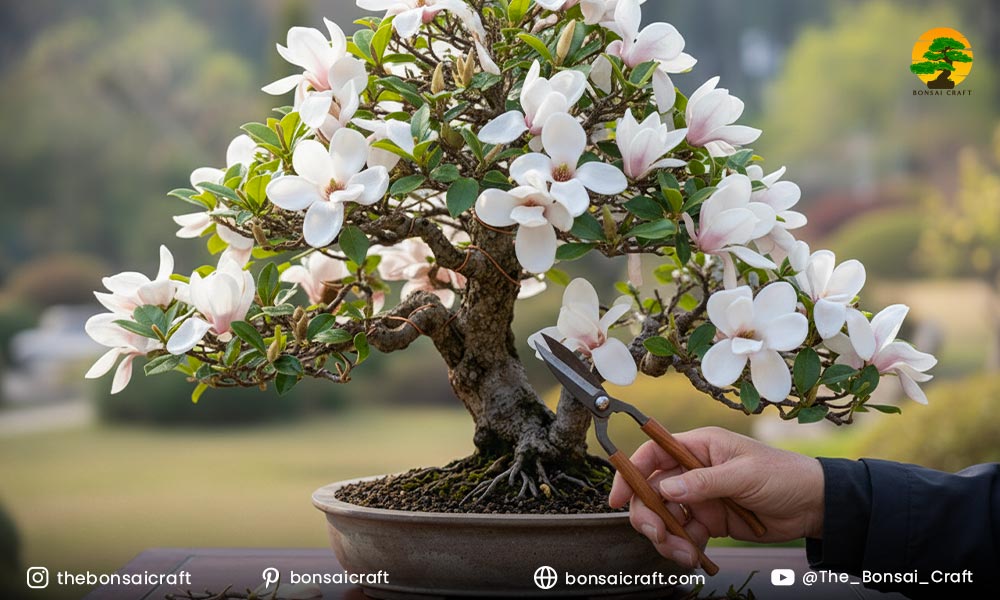
Magnolia Bonsai Pruning and Styling
When to Prune a Magnolia Bonsai?
The best time to prune is late winter to early spring before new growth starts. Avoid heavy pruning during flowering season, as it may reduce blooms.
How to Prune
- Maintenance pruning: Pinch back new shoots to maintain shape.
- Structural pruning: Remove crossing branches and unwanted growth in winter.
- Flower pruning: Deadhead flowers after blooming to conserve energy.
Magnolia Bonsai Styling Techniques
- Wiring: Wire young branches in spring for shaping. Be careful, as magnolia wood is brittle.
- Defoliation: Rarely needed due to large leaves. Instead, control leaf size through pruning.
- Styles: Informal upright, broom, and forest planting are most common for magnolia tree bonsai.
Repotting Magnolia Bonsai
- Repot every 2–3 years for young trees, every 4–5 years for mature trees.
- Best season: early spring before buds swell.
- Trim no more than one-third of the roots.
- Use a shallow pot with good drainage to balance root and top growth.
Seasonal Magnolia Bonsai Care
Spring
- Fertilize as buds swell.
- Protect flowers from frost.
- Begin wiring and pruning.
Summer
- Water daily in hot weather.
- Provide afternoon shade to avoid leaf scorch.
- Watch for pests like aphids and scale.
Fall
- Reduce fertilizer.
- Collect seeds for propagation.
- Remove fallen leaves to prevent disease.
Winter
- Deciduous magnolias enter dormancy—protect roots from freezing.
- Evergreen varieties need light watering and frost protection.
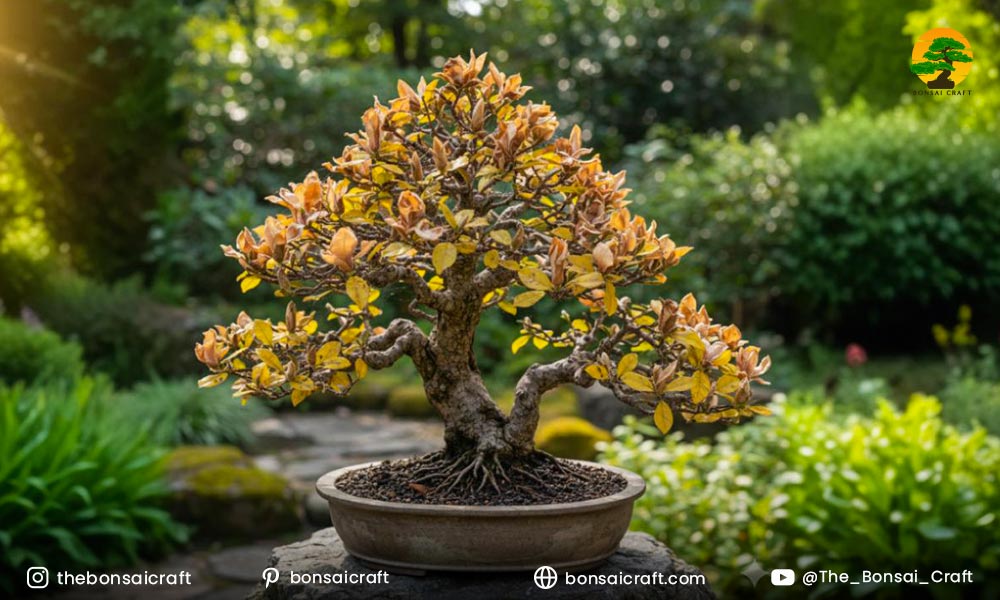
Common Problems in Magnolia Bonsai Care
- Leaf Scorch – Caused by too much sun or underwatering. Provide partial shade.
- Root Rot – From overwatering or poor drainage. Always use bonsai soil mix.
- Pests – Aphids, scale, and spider mites may attack. Use neem oil or insecticidal soap.
- Poor Flowering – Usually due to lack of sunlight or excessive pruning.
Conclusion
The magnolia bonsai tree is one of the most rewarding bonsai species, offering dazzling flowers, glossy leaves, and timeless beauty. With the right balance of sunlight, water, pruning, and seasonal care, you can enjoy a thriving bonsai magnolia that blooms year after year.
As an enthusiast, my tip is: patience is everything with magnolia bonsai. Since they grow slowly, shaping takes time—but the spring blossoms will make your journey unforgettable.
FAQs About Magnolia Bonsai
Can you bonsai a magnolia tree?
Yes. Magnolia bonsai trees are excellent for bonsai due to their strong branches, fragrant flowers, and adaptability to different bonsai styles.
How long does it take for magnolia bonsai to bloom?
Most magnolia bonsai trees start flowering after 3–5 years if grown from saplings. Seed-grown trees may take 7–10 years to bloom.
What is the best magnolia for bonsai?
The Japanese magnolia bonsai and star magnolia bonsai are best for beginners due to their compact growth and smaller leaves.
How often should I water my magnolia bonsai?
Water when the top 1–2 inches of soil feels dry. In summer, this may mean daily watering, while in winter it may reduce to every 2–3 days.
Can magnolia bonsai be grown indoors?
Yes, but indoor magnolia bonsai requires strong grow lights, humidity trays, and good airflow. Outdoor growth is generally healthier.
